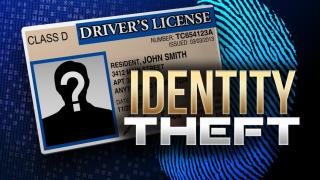Identity Theft

Identity theft happens when someone uses your Social Security number or other personal information to open new accounts, make purchases, or get a tax refund.
Most people who experience identity theft must take several steps to recover. IdentityTheft.gov is the federal government's one-stop resource to help you report and recover from identity theft. The site provides step-by-step advice and helpful resources like easy-to-print checklists and sample letters.
If you believe that someone is using your personal information, visit IdentityTheft.gov.
- Helpful PDF's - Identity Theft a Recovery Plan, Identify Theft What to Know, What to Do
- Tax Related Identity Theft
- Medical Identity Theft
- Child Identity Theft
WARNING SIGNS
There are many ways that you might discover that someone is using your information. You might get a notice from the IRS or find unfamiliar accounts on your credit report. You might notice strange withdrawals from your bank account, get bills that aren't yours, or get calls about debts that you don't owe.
WHAT TO DO RIGHT AWAY
If you see one of these warning signs of identity theft, act quickly. Taking these steps will help you limit the damage. IdentityTheft.gov will guide you through each step.
- Call the companies where you know fraud occurred.
- Place a fraud alert on your credit reports and get copies of your report.
- Report identity theft to the FTC.
- File a report with your local police department.
Then, take a deep breath and begin to repair the damage. Depending on your situation, your next step might be closing accounts opened in your name, or reporting fraudulent charges to your credit card company. IdentityTheft.gov can help - no matter what your specific identity theft situation is.
IF YOUR INFO IS LOST OR STOLEN
Did you recently get a notice that says your personal information was exposed in a data breach? Did you lose your wallet or learn that an online account was hacked? Depending on what informaiton was lost, there are steps you can take to help protect yourself from identity theft.
PROTECTING YOUR IDENTITY
While identity theft can happen to anyone, there are some things you can do to reduce your risk. Here are five ways to make protecting your identity part of your everyday routine:
- Read your credit card and bank statements carefully and often.
- Know your payment due dates. If a bill doesn't show up when you expect it, look into it.
- Read the statements from your health insurance plan. Make sure claims paid match the care you got.
- Shred any documents with personal and financial information.
- Review each of your three credit reports at least once a year. Visit annualcreditreport.com to get your free reports.
- For more prevention tips and resources you can share with others, visit ftc.gov/idtheft.

